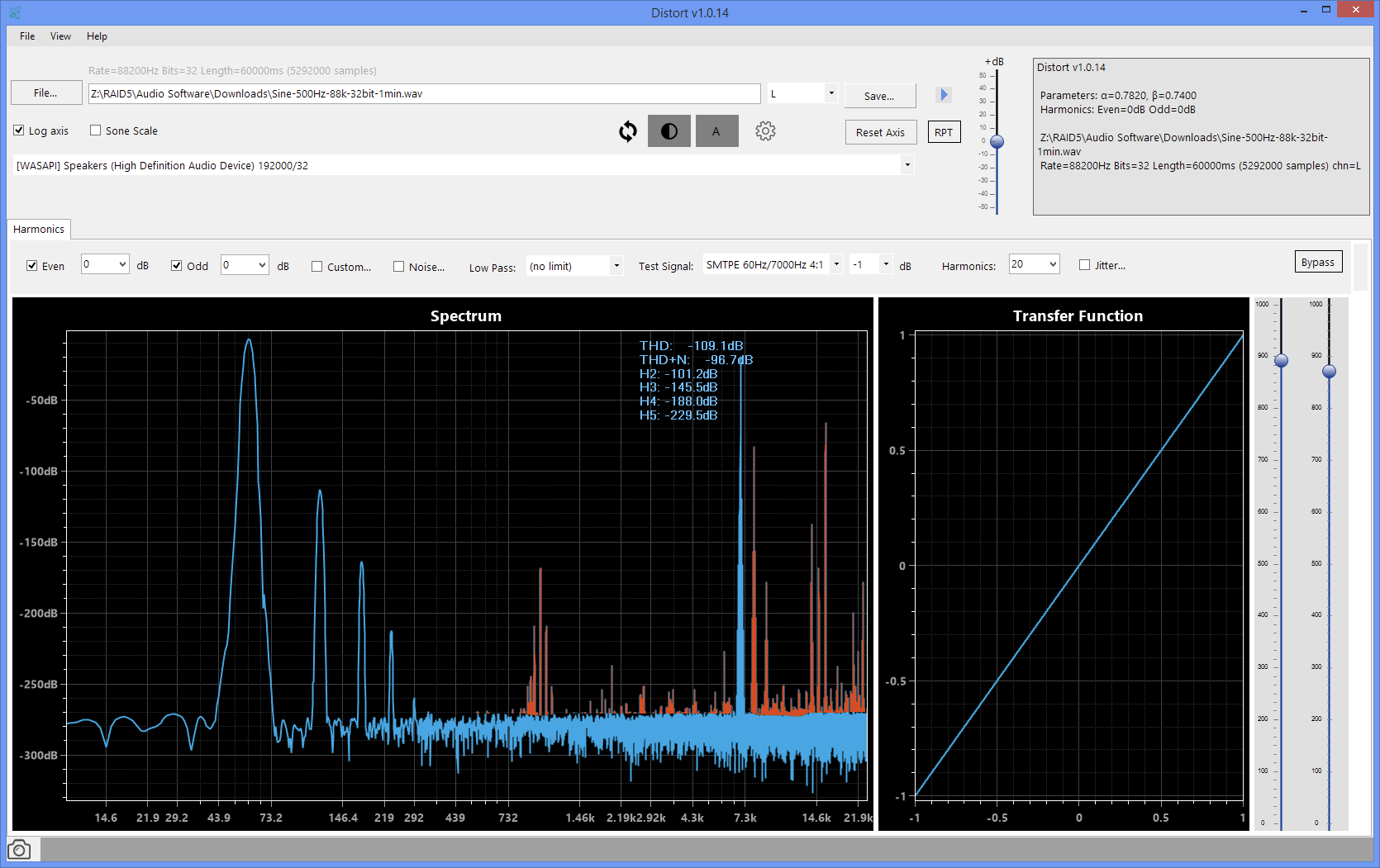This is a question and an on-going investigation. I don't have the answers although intend to spend some time looking into it. Would appreciate any thoughts, suggestions on how to test, or pointers to other existing research or test results.
HQPlayer author Jussi (@Miska ) has been advocating measurements of DACs well beyond the audible range, into many MHz. He shared some not-so-good looking plots of various DACs producing high level distortion, much past the 24kHz range. The contention is that such noise and spurious signals could inter-modulate into the audible range producing distortion there. What's more, such intermodulation can occur outside the DAC, for example in the preamp, or the amp, if these are not appropriately filtered at the input.
With my distortion simulation tool, DISTORT, I was able to confirm that aliasing and IMD from high-frequency noise/signal could be reflected below 24kHz. Here's a simple 2-tone (SMTPE 60Hz/7kHz) IMD test with two RF-frequency tones added in the presence of some minor non-linear distortion. The two spurious tones are at 1MHz @ -50dB and 10MHz @ -60dB. Red components are caused by the RF signal:

So, at least in theory (and in simulation) ultrasonic and RF energy could potentially interfere with the audible range through IMD/aliasing.
The next step is to confirm that this occurs in a real-world scenario. To start this process, I just placed an order for a low-end Picoscope and intend to do some simple measurements with it with a few DACs on hand to see how much energy is up there. I'm sure there are folks with access to much, much better scope and analyzer equipment. Would love to see some test results similar to what @Miska posted with other DACs and any thoughts on why this effect is or isn't real and/or significant.
HQPlayer author Jussi (@Miska ) has been advocating measurements of DACs well beyond the audible range, into many MHz. He shared some not-so-good looking plots of various DACs producing high level distortion, much past the 24kHz range. The contention is that such noise and spurious signals could inter-modulate into the audible range producing distortion there. What's more, such intermodulation can occur outside the DAC, for example in the preamp, or the amp, if these are not appropriately filtered at the input.
With my distortion simulation tool, DISTORT, I was able to confirm that aliasing and IMD from high-frequency noise/signal could be reflected below 24kHz. Here's a simple 2-tone (SMTPE 60Hz/7kHz) IMD test with two RF-frequency tones added in the presence of some minor non-linear distortion. The two spurious tones are at 1MHz @ -50dB and 10MHz @ -60dB. Red components are caused by the RF signal:

So, at least in theory (and in simulation) ultrasonic and RF energy could potentially interfere with the audible range through IMD/aliasing.
The next step is to confirm that this occurs in a real-world scenario. To start this process, I just placed an order for a low-end Picoscope and intend to do some simple measurements with it with a few DACs on hand to see how much energy is up there. I'm sure there are folks with access to much, much better scope and analyzer equipment. Would love to see some test results similar to what @Miska posted with other DACs and any thoughts on why this effect is or isn't real and/or significant.
